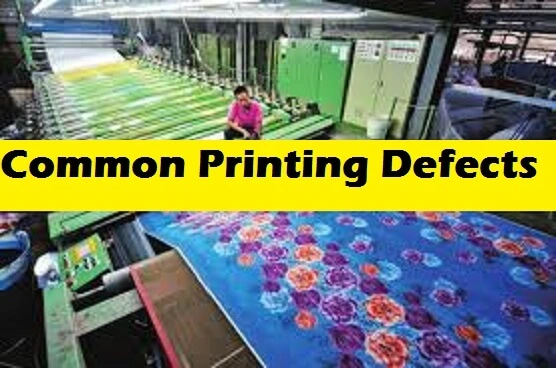Detail Descriptions of Common Printing Defects/Errors/ Faults in Fabric, their Causes, and Remedies
Printing can be defined as a localized application of dye or pigment as a paste to generate a pattern or design in a fabric. It is also called localized dyeing. Nothing is perfect, during the process of textile printing, printed fabrics have different types of defects. If you are running an industry and managing the printing section, then you just have to consider these defects that will distort the value of your fabric. This article is about detailed descriptions of Common Printing Defects in Fabric, their Causes, and Remedies.
Printing defects can result from faulty or improper printing processes, from printing defective or improper preparation fabric before printing or from printing in the material, or from imperfections in the material. Here, we are listing some of the major textile printing defects to establish a high-quality standard for your textile industry.

List of Common Printing Defects/ Faults in Fabric
- Flushing / Wicking
- Bleeding
- Misfits
- Stick-in
- Scrimps
- Banding
- Unwanted pigment markings on clothes
- Bizarre
- Crack or Miss Alignment in Transfer Printed Fabric
- Printing machine stop
- Color out
Detail Descriptions of Common Printing Defects Fabric, their Causes and Remedies
1. Flushing / Wicking:
Due to the low viscosity of the print paste. This occurs when the printed area exits the uncontrolled region. The result is a halo or shading effect around the outline of the pattern design.
2. Bleeding
Due to the low viscosity of the print paste. This is the major defect because it occurs throughout the fabric until the viscosity is corrected.
3. Misfits
Misfit is a print defect caused by improper alignment of the screen. Also known as out of registration, misfits leave unexpected areas in the design. For example, a green leaf may overlap its black outline or print to another color.
4. Stick-in
Stick-in occurs when a small fiber or piece of paper is stuck in the screen opening. The result is a small unconstrained circle in the design. Stick-ins are very difficult to see and often go unnoticed over a long period of time.
5. Scrimp
A scrimp defect occurs when the fabric shrinks under a screen during the printing process. The pattern is then printed above the crease, leaving a large unexpected area when the fabric returns to rest.
6. Banding
Defects created by the movement of the print head on the substrate. Scan print head, or the use of a print head that moves back and forth of the substrate in a straight line, keeping the ink droplets at precise locations above the line. If the head is not aligned properly, or if the substrate moves unevenly, the result is a slight horizontal band or line of unresectable area.
7. Unwanted Pigment Marking On Clothes
The screen has holes in it that should have been covered. This may be due to screen aging and eventual damage or improper exposure to light.
8. Mottled
The color is applied unevenly during the printing process. It happens if the ink is less.
9. Crack or Miss Alignment in Transfer Printed Fabric
The incomplete transfer of the design of the paper to the fabric on transfer printing caused the removal of the paper transfer while the fabric was still hot.
10. Printing Machine Stop
As a result of the printing machine, the dye is sometimes smoothed along the width of the fabric.
11. Color Out
The result is less color in the reservoir on the printing machine. The available supply of color in the machine can resolve it.
Conclusion
Printing is a very expensive process, and having defects here is very costly. Fabric printing defects can undermine the quality and appeal of printed textiles. By identifying the causes of these defects and applying appropriate remedies, manufacturers can ensure that their fabric printing processes produce high-quality, consistent, and long-lasting designs. Regular maintenance of equipment and adherence to best practices in the printing process are essential for achieving successful fabric printing outcomes.
- Additionally, You may love to read: Different Types of Defects in Garments and their Classifications
- Packaging Defects Found in Garments Industry
- Product Safety and Regularity Defects in the Garments Industry
- List of Sewing Defects found in Garments Industry
- Stitching: Sewing Defects in Garments
- Sewing Defect with Root Causes and Corrective Actions
- Major, Minor, and Critical Defects in Garments Industry
- Cutting Defects in Garments Industry and Their Causes
- 12 Types of Embroidery Defects Found in Garments Industry
